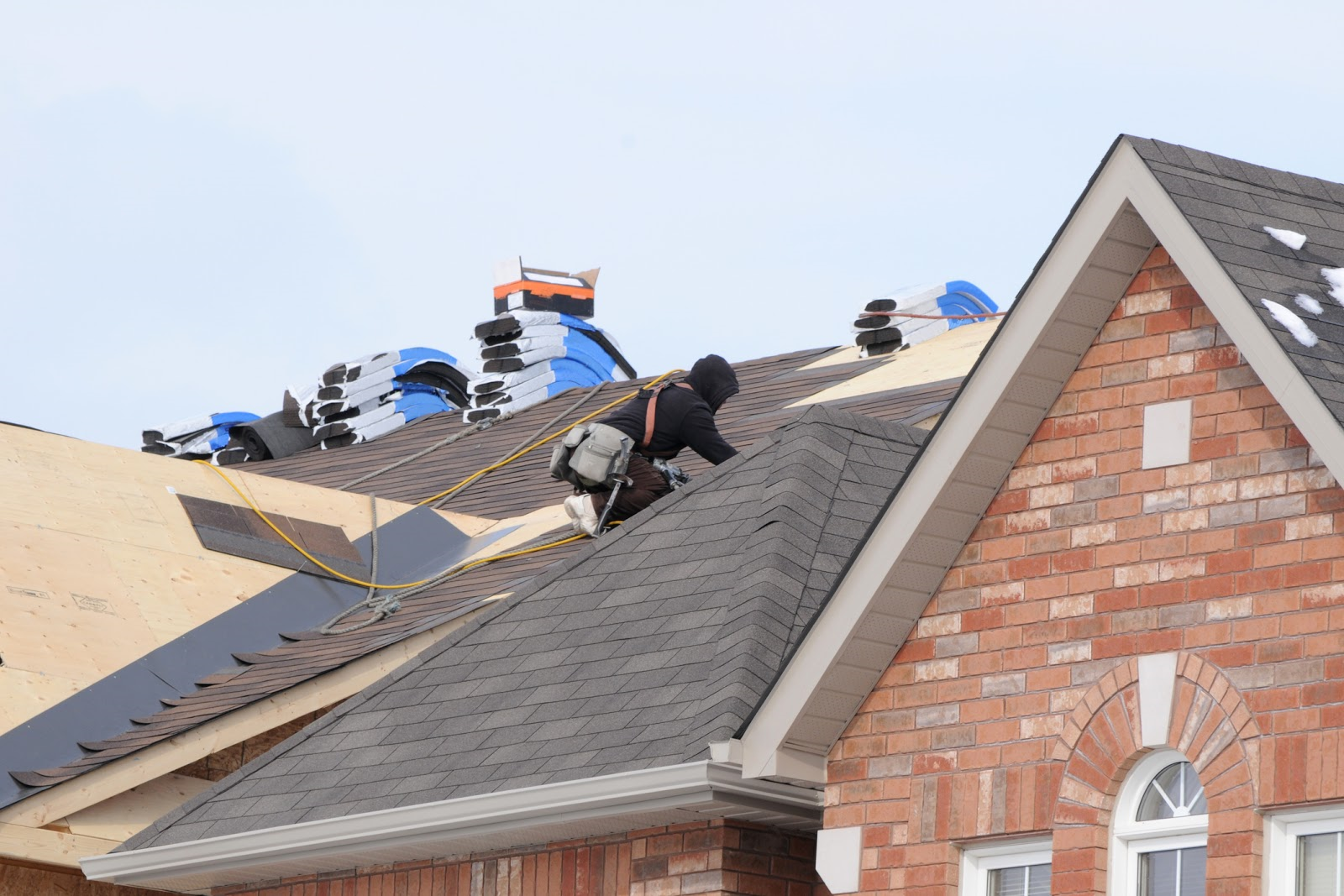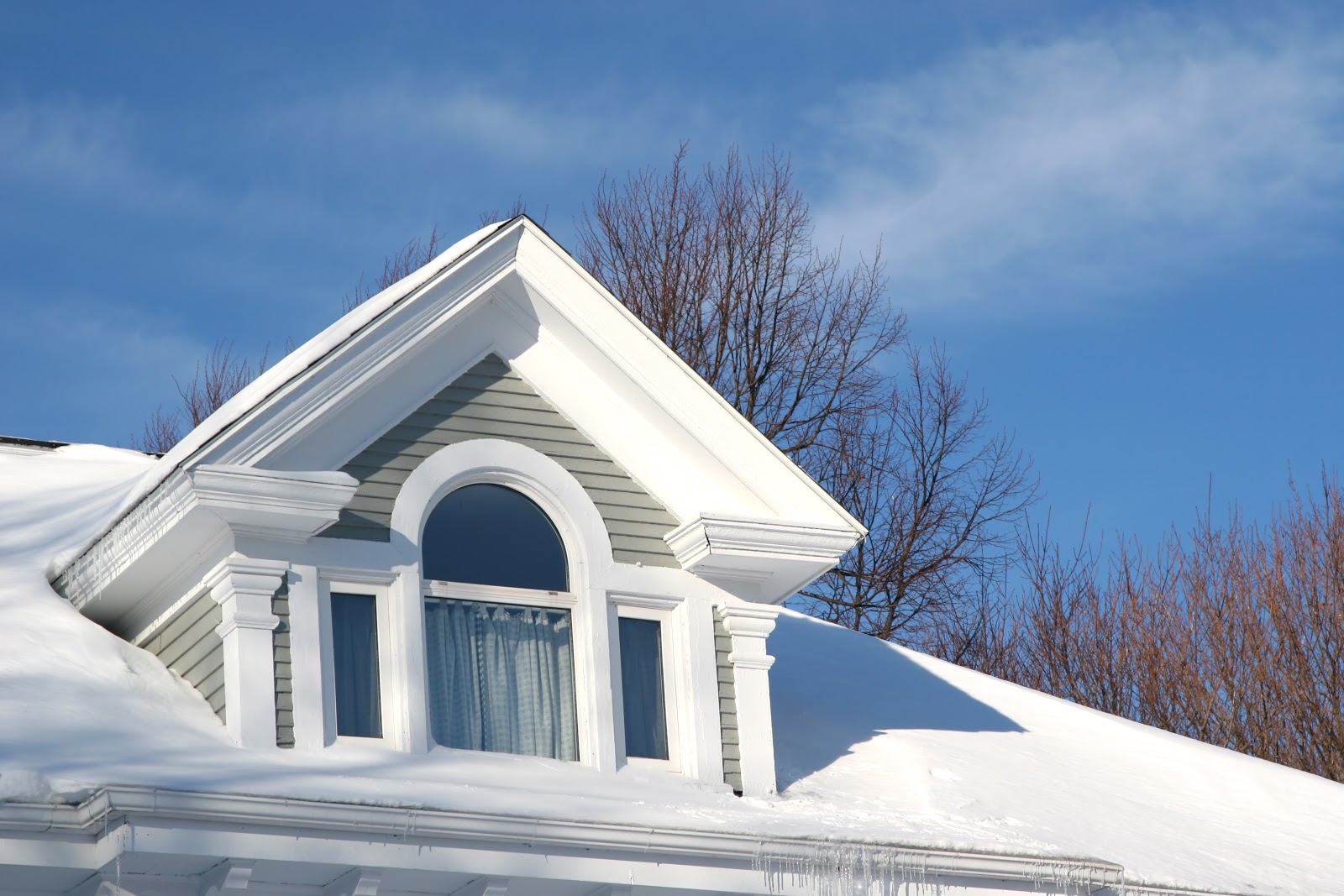PART II – What you Should Know About Winter Roof Replacement
How Winter Weather Affects Roof Installation
If you have been told your roof needs to be replaced immediately, it’s important to understand how winter weather will affect the installation process. There are some roofing materials that can be installed no matter how low the mercury drops (although snow and ice may cause delays). These include metal shingles and standing seam roofs as well as thermoplastic single ply membranes (TPO/PVC) with heat-welded seams.
However, standard asphalt and fiberglass blend shingle manufacturers suggest that the temperature should be at least 40 degrees Fahrenheit when you install their shingles. If this is the type of roof you select, your roofing contractor will need to adjust the installation schedule according to the weather if you are replacing your roof during the winter months.
What to Expect
Most homeowners considering a new roof will try to schedule the installation before the weather turns cold. Nevertheless, if you are replacing your roof in the winter, it’s likely because you are experiencing a serious problem – and in cases like this, the longer you wait, the worse the problem will become. When conditions necessitate a roof replacement during the colder months, it’s good to know that an experienced contractor will be able to successfully install an asphalt shingle roof during the winter – as long as proper precautions are taken.

Choose Experienced Roofers Near Winnetka
While it’s important to look for knowledgeable and experienced roofers near Winnetka when you need to have your roof repaired or replaced at any time of year, it is especially vital during the winter. Roofers simply cannot cut corners when working in the winter, as it can be extremely dangerous.
Ice and snow will need to be cleared each day before work can begin, and all work will have to be conducted slowly because the surface will be slippery. Temperature must also be considered, as roofers can’t wear heavy boots or gloves because they won’t be able to bend their toes to maintain their footing or grasp nails properly.
Roof installation is already a physically demanding task, and the added weight of heavy winter clothing can make it extremely difficult to move around on the roof or climb up and down a ladder. Therefore, it’s important to hire an experienced roofing contractor who will take time to evaluate the weather conditions and make a reasonable determination as to whether it’s safe to work on any specific day. This should be done each day to protect both your home and the roofing crew.
Some Equipment is Affected by Cold Temperatures
The roofing process may be slowed by several weather- related issues including problems with the compressor that powers the nail guns used to install the shingles. Ice can form inside, reducing the airflow which in turn means the gun won’t drive the nails to the correct depth. Because of this, it is imperative that your roofer either uses a hammer instead of the nail gun or constantly monitors and adjusts the nail gun to place the nails at the correct depth. This may not seem like a big deal, but nails that don’t go in deep enough will not hold the shingles in place correctly, and if the nail gun is set to “overdrive” the nails, they will damage the roofing and pull through it – causing the roof to fail prematurely.

Extra Consideration is Required when Installing Shingles in Cold Weather
Depending on how cold it is, the asphalt shingles, which can become brittle in the cold, may require some extra attention during winter installation. When the weather is warmer, the shingles’ self-sealing strip quickly causes the shingles to stick or “tab” together as they are designed to do. The sun activates this process, even in the winter, however, the edges of the shingles may still curl up due to the cold. This is known as “cold curl” and may require the installation crew to hand seal the shingles by applying roofing cement under each shingle. This will prevent problems with loose shingles until the weather warms and the shingles self-seal properly.
Replacing Your Old Roof will Provide Peace of Mind
Despite the potential difficulties of having your roof replaced during the winter, there are many advantages to having a new roof installed at any time of year. The most important is that your new roof will provide you and your family with the peace of mind of knowing your home is protected and there is no danger of heavy snow causing the roof to collapse. While all roofs require a bit of maintenance and repair during their lifetime, a new roof will remain problem-free for many years.

Your new roof will also come with a manufacturer warranty – but only if it is installed by a legitimate, certified roofing contractor like Showalter Roofing. Our company has earned a reputation for excellence because we take pride in every job we do – and our goal is always your complete satisfaction. Don’t trust your home to just any contractor – give our experienced team a call today.



